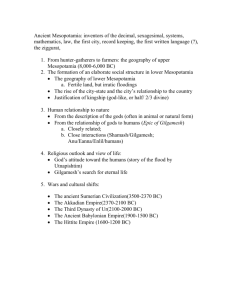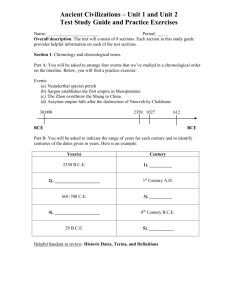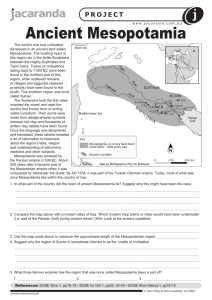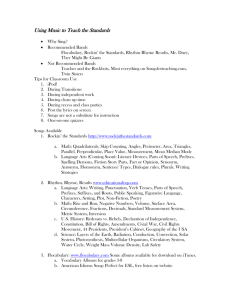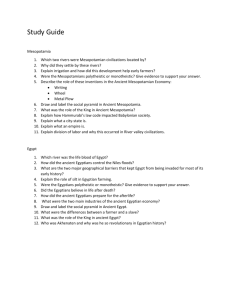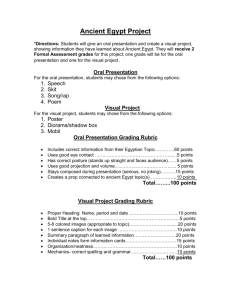AKS 40 WORKSHEET - Brookwood High School
advertisement
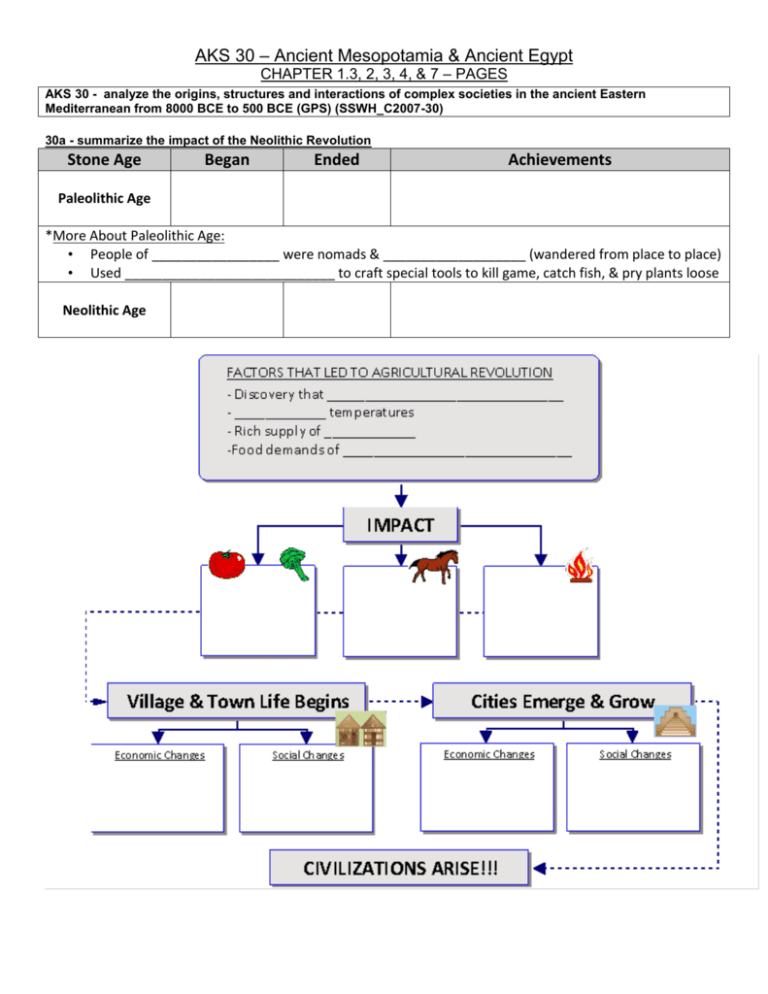
AKS 30 – Ancient Mesopotamia & Ancient Egypt CHAPTER 1.3, 2, 3, 4, & 7 – PAGES AKS 30 - analyze the origins, structures and interactions of complex societies in the ancient Eastern Mediterranean from 8000 BCE to 500 BCE (GPS) (SSWH_C2007-30) 30a - summarize the impact of the Neolithic Revolution Stone Age Began Ended Achievements Paleolithic Age *More About Paleolithic Age: • People of _________________ were nomads & ___________________ (wandered from place to place) • Used ____________________________ to craft special tools to kill game, catch fish, & pry plants loose Neolithic Age 30b - explain how geographic features and cultural diffusion affected the development of ancient Mesopotamia and ancient Egyptian River Valley civilizations GEOGRAPHIC FEATURES OF MESOPOTAMIA CHALLENGE SOLUTION 30c - analyze the development of Mesopotamian societies including religious, cultural, economic, and political facets of society including Hammurabi's Law Code Key Civilizations in Mesopotamia Civilization or Empire Date Sumerian City-States 4,000 - 2,500 B.C. Akkadian Empire 2,330 - 2,100 B.C. Babylonian Empire 1,800 - 1,500 B.C. Assyrian Empire 1,100 - 612 B.C. Chaldean Empire 612 - 539 B.C. Persian Empire 550 - 333 B.C. Importance 30d - describe the relationship of religion and political authority in Ancient Egypt Ancient Egypt Religion & Politics Culture Science & Technology Writing System 30e - explain the development of monotheism including the concepts developed by the ancient Hebrews and Zoroastrians ORIGINS OF JUDAISM 2000 B.C. 1650 B.C. 1300-1200 B.C. 1020 B.C. 962 B.C. 922 B.C. 722 B.C. 586 B.C. 515 B.C. Zoroaster: 30f - identify and examine early trading networks and writing systems existent in the Eastern Mediterranean including those of the Phoenicians Phoenicians 30g - explain the development and importance of writing systems including cuneiform and the Phoenician alphabet Writing Systems Sumerians Egyptians Phoenicians

